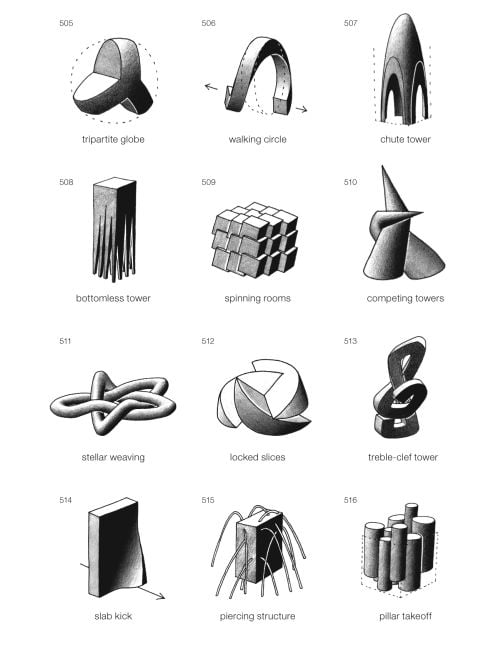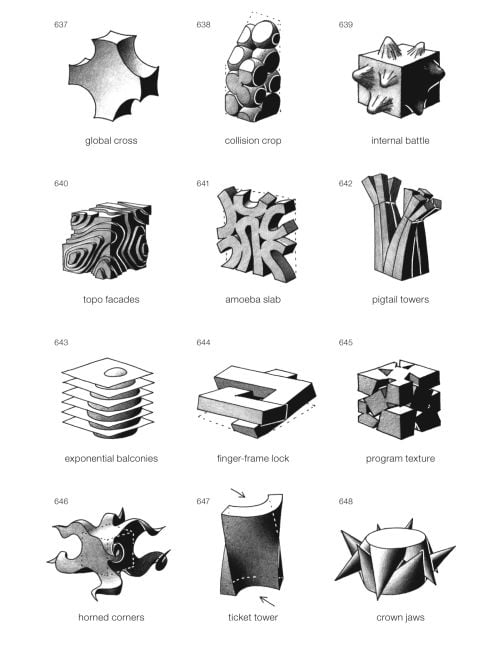
April 14, 2008
Siteless, but Not Aimless
Imagine Learning from Las Vegas as illustrated by Chris Ware, and you’ll get a sense of François Blanciak’s marvelously inventive new book, Siteless: 1001 Building Forms (The MIT Press, 2008). Blanciak, a French architect who has worked alongside Peter Eisenman, Frank Gehry, and the Danish provocateur Bjarke Ingels, now lives in Japan, where he is […]
Imagine Learning from Las Vegas as illustrated by Chris Ware, and you’ll get a sense of François Blanciak’s marvelously inventive new book, Siteless: 1001 Building Forms (The MIT Press, 2008).
Blanciak, a French architect who has worked alongside Peter Eisenman, Frank Gehry, and the Danish provocateur Bjarke Ingels, now lives in Japan, where he is a research fellow at the University of Tokyo. In Siteless, his first book, he displays an equal gift for playfulness and rigor, drawing by hand 1,001 building types—fanciful and sometimes impossible—with no thought paid to site, program, or budget.
From studies in heroic forms (figure 599, “braid tower,” a building of intertwined cylinders) and tweaks of classical tropes (figure 570, “animal caryatids”) to visual puns (figure 153, “recycled tower,” an OMA-like version of the recycling symbol) and bad jokes (figure 230, “hanging antenna,” a tower in a noose), Blanciak explores the possibilities of architecture as pure heady fun. And to prove that these aren’t idle sketches, he puts one of them (figure 638, “collision crop”) to the test in the last chapter, creating a model, floor plans, and elevations to show how the twenty-three-sphere structure (think of a messy stack of oranges) might look in the context of an existing site in Tokyo.
Taken together, the drawings are meant as a tonic, Blanciak writes, to architectural theory’s “sole focus on writing,” offering “a creative alternative to critical academic literature.” (The two-and-a-quarter-page introduction is by far the longest text in the book.) The front flap boldly proclaims, “Some may call it the first manifesto of the twenty-first century, for it lays down a new way to think about architecture.” That’s probably a little overheated, but Siteless certainly finds a novel way of putting a friendly face on architectural theory.







